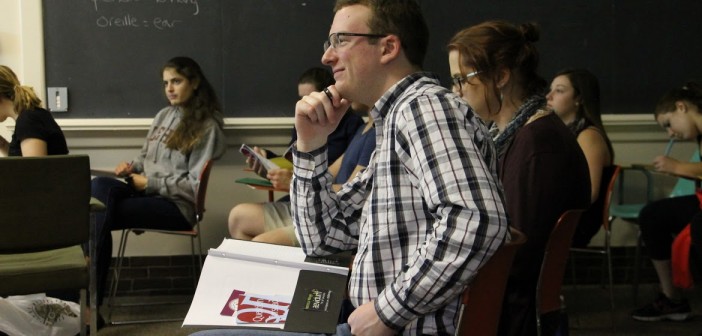The National Alliance on Mental Illness on Lehigh’s campus, also known as NAMI, hosted a suicide prevention discussion entitled “Question, Persuade, Refer (QPR), Ask a Question, Save a Life,” which aimed to educate about the signs of, and techniques for confronting, individuals contemplating suicide.
The club hosted speaker Francesca Pileggi from the board of the Pennsylvania Suicide Prevention Coalition to certify the students in QPR. The goal of QPR is to teach students how to intervene if a friend is showing signs or behavior that could lead to suicide. QPR is intended to mirror CPR. It is temporary intervention until a professional can take over the situation.
After establishing behavioral and situational clues that those considering suicide often display, Pileggi taught students how to pose “the difficult question” to their peers. She stressed that, if in doubt, students should still ask the question. And if the person potentially contemplating suicide is reluctant, she insisted that students be persistent in an effort to get them talking.
Pileggi also said that there should be at least an hour set aside for the discussion, which should take place in a private setting. It is also crucial for the questioner to then become a listener.
The concept of giving the peer full attention fell into the “persuasion” section of QPR. Students were taught to offer hope to the peer and elicit a promise to seek help.
Finally, for the “refer” portion of QPR, Pileggi said that a student concerned about the friend or peer should either take them to a counselor or, in a more immediate situation, to a hospital. She emphasized that students should use their own judgment in whether or not to take immediate action.
“(Suicide is) a huge public health issue,” she said during the presentation. Pileggi then listed harsh facts supporting her point. There is one suicide every 13.3 minutes, and suicide is the 10th-highest cause of death in the U.S. It is the second leading cause of death for 15- to 25-year-olds; there are over 980,000 suicide attempts every year; there are 5 million Americans who have attempted suicide; and firearms are used in 51 percent of suicides.
Pileggi also offered support and hope to students on the bleak subject. She assured the room that the myth that suicide is inevitable if someone had attempted or is considering suicide is not true. “If people in a crisis get the help they need, they will probably never be suicidal again,” she said.
Many students packed the room for the presentation. “Just having more people talk about it would be a good first step,” Kristen McArthur, ’16, said of our society’s attitude toward mental illness. “A lot of people are afraid to talk about mental illness… if there wasn’t such a stigma around it, that would be a good first step to getting people aware.”
“(People should develop) a higher level of awareness and understanding in regard to the prevalence of suicide, because it’s something we don’t talk about,” said NAMI club member Sara Keeler, ’16. “It helps people think it doesn’t happen, and that’s not true.”
“I hope that students understand that they can make a big difference in the fight against suicide just by being there and asking the right questions,” said Pileggi to close the discussion.
Students who are struggling with depression and suicidal thoughts can reach out to Lehigh counselors for free. If experiencing a mental health emergency, the first available counselor will make time. Students can also make appointments with Counseling & Psychological Services by contacting 610-758-3880. Furthermore, Aevidum, a suicide prevention line run and paid for by the government, can be reached at 1-800-273-8255.






Comment policy
Comments posted to The Brown and White website are reviewed by a moderator before being approved. Incendiary speech or harassing language, including comments targeted at individuals, may be deemed unacceptable and not published. Spam and other soliciting will also be declined.
The Brown and White also reserves the right to not publish entirely anonymous comments.